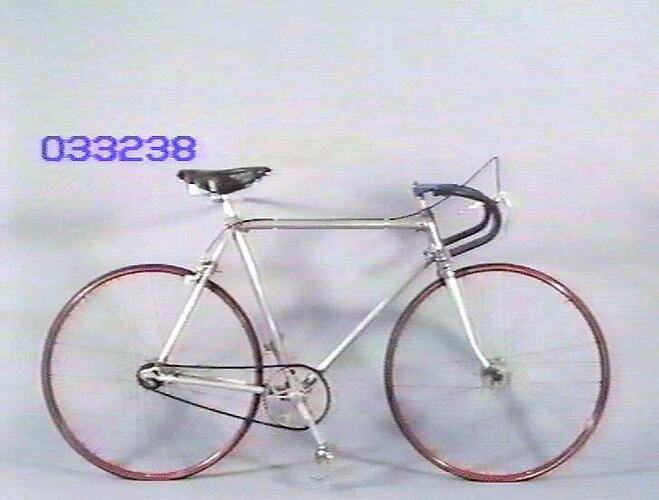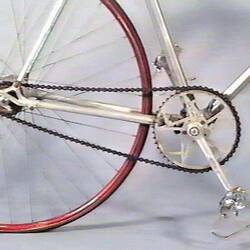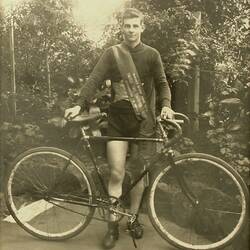Summary
Caminade racing bicycle given to Hubert Opperman, circa 1938. It is fitted with a rear wheel rim brake, pedal powered rear wheel chain drive and a 'harden' rear wheel fixed hub. Frame octagonal shaped duralumin. Made by Caminade, France, circa 1938. This example is believed to be serial no.325.
Pierre Caminade was a French specialist bicycle maker who operated during the period 1910-1950, in the Paris suburb of Bios-Colombes and produced some very unique designs. During the 1930s, he developed a lightweight design sold under the 'Caminargents' brandname using Dural (aluminum alloy) frames of octagonal tubing fitted into cast lugs which were clamped around the tubes and bolted to form the joints. At this time techniques for welding aluminium alloys were not generally available and this material was largely used in aircraft construction. The head tubes and associated lugs were cast as one piece. Forks were produced in the same manner, with the entire crown cast as one, and the blades bolted into it. It appears that only a relatively small number of the bicycles were made (probably amounting to several hundred in total), being aimed at the high-end of the market for professional riders and serious amateurs. This bicycle is one of the earlier examples of the advanced light-weight racing bicycles now widely used by professional and amateur cyclists.
More Information
-
Collection Names
-
Collecting Areas
-
Acquisition Information
Donation from Sir Hubert Opperman, 09 Nov 1982
-
Maker
-
Presented To
-
Inscriptions
Marked '325' on pedal axle bracket.
-
Brand Names
-
Classification
-
Category
-
Discipline
-
Type of item
-
Dimensions
8.3 kg (Weight)
-
Keywords



